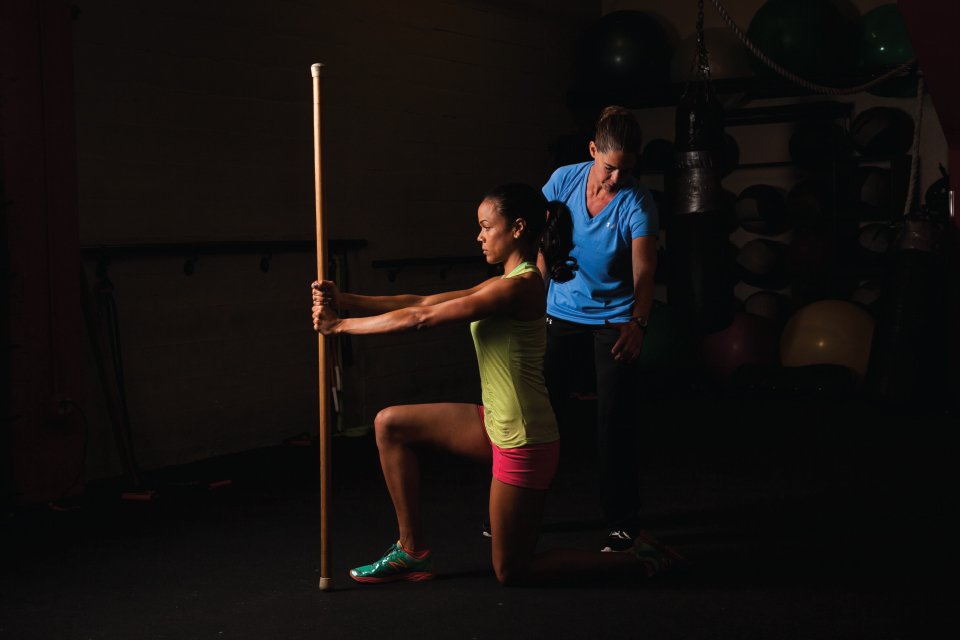Tightening Up Your Trunk Muscle

When we think about having a strong core, trunk flexion and extension come to mind for many who are familiar with fitness facilities or boot camps. The reason for this is usually that aesthetic, lean look we are striving to earn through our workouts. Truth is, all of us have to lock down good nutrition and the ability to power up metabolic output through more efficient training and movement. As a result, it’s important to train the core with the purpose of improving its primary role in movement to maximize movement performance.
The trunk is designed to give a stable and strong central unit, allowing the extremities to be mobile and express a wide range of movement. This stability manifests in situations involving static motor control—where unwanted movement is limited as much as possible, and the trunk acts as a conduit for energy transfer between the upper and lower body. This stability creates a great connection for total body movement and is the ticket for challenging workloads to target better conditioning and a leaner physique.
These three movements show different ways to use motor control in order to maintain static and dynamic stability, which help maintain that strong connection throughout the body. Not only is this a purpose-driven workout set for the core but it also involves total body movement, providing stimulus for challenging the body to make positive changes.
Mountain Climbers
Purpose: Challenging the upper body and trunk to remain stable while moving the lower body with an alternating triple flexion and extension movement.
-
Begin by moving into a plank position on the ground or on a slightly elevated surface with feet planted. Make sure the head and trunk are in line with the extended legs at the start and maintain that alignment with each leg extended in the movement.
-
Start the movement with one leg fully flexed at the ankle, knee, and hip; make sure that this leg stays positioned under the body, and do not let the knee move laterally away from the body while flexed.
-
Using a marching tempo, alternate driving the extended leg into flexion (bending) by bringing the knee toward the chest. At the same time, forcefully move the flexed leg into extension to plant the foot.
-
Maintain a neutral spine during the lower body movement, all while keeping the upper body or trunk still. There should be no movement other than in the legs.
-
Once the marching tempo has been mastered, increase the pace as much as can be controlled for several repetitions while maintaining form.

Upper Body Step Ups
Purpose: Challenging upper body dynamic motor control and maintaining a stable trunk position to increase upper body and core strength.
-
Find a box step. Start in a push-up position, with hands straddling the step (one on either side),
-
Begin by flexing the right shoulder and elbow to place the right hand on top of the step, and then push through the step with the hand to elevate the trunk.
-
Follow the upward movement and place the left hand onto the step.
-
While paying close attention to maintaining a neutral spine and control of the body, return the right hand back to the ground. Don’t let the hips collapse or rock from side to side when making the downward movement. Follow by placing the left hand back on the floor, returning to the starting position.
-
Perform several repetitions with the right arm as lead and then switch to leading the movement with the left arm and hand.

Fast Legs with Knee Punch
Purpose: Using a knee punch to the soft-sided medicine ball gives the body feedback, challenging the trunk to maintain dynamic stability while not collapsing into flexion during the driving phase of the movement.
-
Start standing in a tall posture, holding the medicine ball out in front of the naval with arms extended.
-
Drive the right leg forward into triple extension of the ankle, knee, and hip to punch the knee into the medicine ball. The left leg is used as a stance leg and is simply shifted forward in the extended position as the right leg drives the movement. Be sure to keep the ball at a consistent height and position while maintaining a tall standing posture.
-
Repeat the movement, but drive with the left leg to execute a left knee punch.

This series of movements can be used as a total body circuit with the added benefit of challenging the strength of the trunk during conditioning. Having a strong connection through the trunk reinforces efficient energy transfer through the core and allows for better movement quality. More efficient movement means more work in less time, and that’s a great way to power up conditioning.






